The quartering and arrangement of the army during the Russian-Japanese war 1904 – 1905.
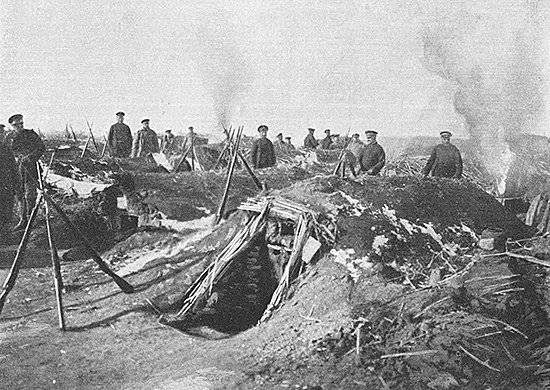
The quartering and equipping of the troops in wartime was one of the most difficult and crucial tasks of the Ministry of War of the Russian Empire. A brief overview of the historical experience of solving these problems during the Russian-Japanese war 1904 – 1905. - the purpose of this article. Of course, in a brief article there is no opportunity to consider the chosen topic in its entirety. The author here is limited to some aspects of the quartering and arrangement of troops in wartime.
Late XIX - early XX centuries. were marked by the sharpest struggle of the great powers for the last “pieces” of the not divided world. In one or the other region of the planet conflicts and wars arose. So, Russia took part in the Russo-Japanese War (1904 – 1905).
In Russia, interest in the Far East began to manifest itself from the 17th century, after the entry of Siberia into its structure. The foreign policy of the Russian government until the end of the XIX century. not wore aggressive nature. In that region, the lands attached to Russia did not previously belong to either Japan or China. Only at the end of the XIX century. autocracy took the path of territorial seizures. The sphere of interests of Russia was Manchuria1.
Due to the collision with China, part of the troops of the Amur and Siberian military districts and the Kwantung Oblast were located within Manchuria and the Pechiliisky District. By January 1 1902, there were concentrated 28 infantry battalions, 6 squadrons, 8 hundreds, 11 batteries, 4 engineer companies, 1 telegraph and 1 companies of the 2 railway battalion XNX. For the most part, troops were temporarily housed in tents and dugouts. The command of military units and headquarters occupied fanzy (at home - I.V.) in Chinese villages and cities. Given the current political situation, the construction of military buildings was not conducted.
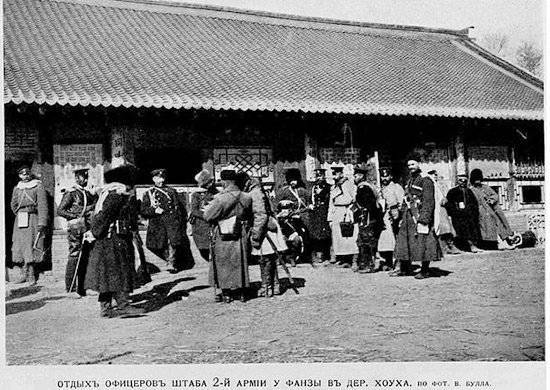
The emergence of the Russo-Japanese War 1904 – 1905 associated with the general aggravation of the contradictions between the powers in the Far East, with their desire to undermine the position of their competitors in this region.
With the announcement of the mobilization, Russia deployed from among the troops of the Far East: 56 infantry battalions, 2 battalion sappers, 172 guns and 35 squadrons and hundreds of field troops; 19 battalions, 12 guns, 40 hundreds of reserve and discount units. If necessary, the troops of the Siberian Military District and two army corps from European Russia were intended to strengthen these troops. The general reserve was four infantry divisions of the Kazan military district3.
The base of the South Ussuri and South Manchurian theaters was the Amur Military District, where the wartime stocks were concentrated mainly. Meanwhile, this district, which was removed more than 1000 versts from the South Manchurian Theater, was connected with the latter only by one, not completely secure, rail track. An intermediate base was needed. The most convenient point for this was Harbin. This item, which was a “junction of railway lines, connected both theaters of operations (theater of operations) among themselves and with our rear and in wartime, had the most serious meaning” 4.
By mid-April 1904, when hostilities unfolded on land, the Russian Manchurian army (commander - infantry general A.N. Kuropatkin) numbered over 123 thousand men and 322 field guns. Its troops were located in three main groups: in the region of Haicheng, Liaoyang, Mukden (over 28 thousand people), on the Kwantung Peninsula (over 28 thousand people), in Vladivostok and Amur Region (over 24 thousand people). In addition, two separate detachments (avant-garde) were advanced from the main forces: Southern (22 thousand people; Lieutenant General GK Shtakelberg) - on the coast of Liaodong Bay and East (more than 19 thousand people; Lieutenant General MI Zasulich) - on the border with Korea.
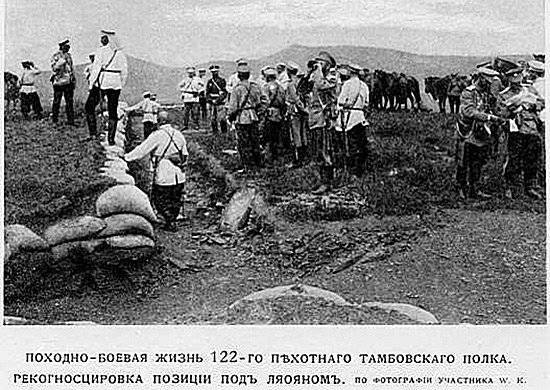
In accordance with the “Regulations on the Field Administration of Troops in Wartime” the deployment of “passing units of troops, teams, transports and individual ranks ... assisted in providing all these units with food, fuel and bedding ...” 5 was the chief of military communications of the army Major General A.F. Zabelin. A large number of settlements in the western part of the Manchurian theater of military operations made it possible to deploy troops along 6 fan fights. Villages of the rural population consisted of adobe fanz surrounded by adobe fences7.
After the outbreak of hostilities, the situation with the deployment of personnel has changed radically. Most of the units and subunits of the army became a bivouac just because there were not enough residential buildings, as the villages were destroyed. In the fanzah there was a part of the officers and staffs. “When I had to bivy around a village,” the officer of the active army recalled, “the inhabitants took it with special pleasure to themselves into the fanzy of officers” 8. Apparently, the reason for this was the desire on the part of the owner to guarantee the integrity of his goodness. In the east, in the mountains, there were few dwellings, and therefore the troops used exclusively tents. “On Sunday, 6 of June, General Stackelberg’s corps pulled into the town of Gaijou,” the newspaper commented on the hostilities and became a bivouac on bare arable fields ... ”9. The arrows and gunners are located in the spread out small tents. At the bivouac it was damp and dirty.
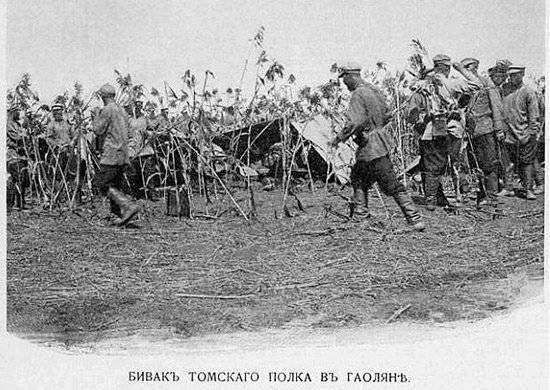
Attempts were made to equip military units in the Russian cities of Primorye. “By order of the commandant of the fortress of Vladivostok,” the Russian Telegraph Agency reported, “a commission was set up to find out the number of free premises in the city suitable for quartering troops for the winter.” 10.
There were many cases when, during marches or after retreat, the troops were located under the open sky. “Tired of the night transition and the tense state during the whole day, people pressed tightly against each other and, despite the rain and strong cold wind, wrapped in the padded“ little sables ”, they went to sleep, - noted the officer of the army. “The officers immediately settled down, curled up and wrapped themselves in what” 11.
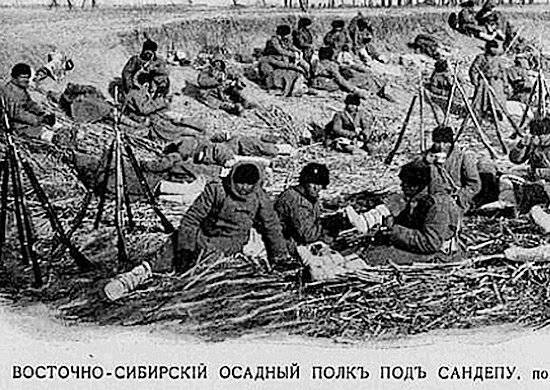
During the war, the troops have repeatedly demonstrated examples of overcoming the difficulties and hardships of front-line life. “Profits in der. Madyapu, exhausted, stranded at one o'clock in the morning, using 7 9 versus hours to pass 16 versts, ”recalls officer P. Efimov. “People settled down for the night at 12-degree frost on the edge of the village in camping tents ...” 19. At dawn 1905 February, 4, the 54 th Infantry Regiment (commander - colonel Sakhnovsky) was to follow the 13 infantry regiment of Minsk (commander - colonel A.F. Zubkovsky), which was to cross the ice to the right bank of the r. Hunhe. When following the mouth in position by the Japanese, artillery fire was opened with 14 and XNUMX shrapnel, units quickly crumbled into a chain and ran across the river.
The winter time was approaching rapidly, when it was required to have enough fuel, without which kitchens and bakeries could not function. It was necessary to heat hospitals and buildings of military institutions and establishments. It was impossible to hope for the supply of firewood from Russia, when troops and ammunition were continuously being transferred to the theater of operations by rail. The quartermaster service allocated only money for fuel, and the troops themselves had to prepare it. "The Chinese give the wood a special price and skillfully hide them from prying eyes, digging them into the ground," wrote the quartermaster of the infantry division, 15. Therefore, it was necessary to use Chinese Xolan16 as fuel. Then the purchase of wood in the rear was organized and warehouses were established in the city of Harbin and at the Gunzhulin 17 station.
In winter, tents could not be used, and therefore other measures had to be taken to accommodate. An engineer from St. Petersburg Melnikov proposed to heat dugouts and tents in the current army with “denatured alcohol using burners” 18. Russian troops resorted to the construction of a large number of dugouts, equipped with ovens. The material for the latter was the bricks of the destroyed villages. “The Japanese wounded are transmitting,” the Russian Telegraph Agency reported, “that their soldiers in the trenches suffer greatly from the cold, although the Japanese army is almost entirely equipped with a winter dress.” 19.
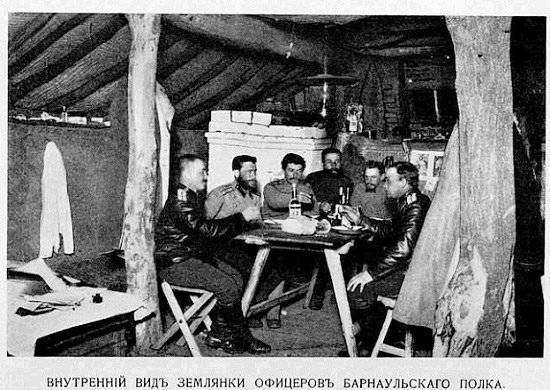
In the autumn of 1904, three army associations were created on the basis of the Manchurian Army: the 1 Army (commander - Infantry General NP Linevich), 2 Army (commander Infantry General OK Greppenberg) and 3- I am the army (commander - cavalry general A.V. Kaulbars). October 13 is the main command in the Far East instead of Admiral E.I. Alekseev was headed by the General of Infantry A.N. Kuropatkin. By the beginning of 1905, Russian troops occupied an almost continuous 100-kilometer front of defense on the r. Shah
In the course of warfare, the current army widely used the construction of strongholds (lunettes, redoubts, forts, etc.). As a rule, they calculated for the garrison in the 1 – 2 company, but in the most dangerous areas they were engaged in a battalion with machine guns and guns. They were heated heated bunkers, kitchens, latrines and other outbuildings. When equipping support points, the templates did not adhere, but adapted to the terrain conditions. The most original were the Fort of the Resurrection and the so-called "Cap-Aeron Ter-Akopov." The first was a rectangle, cut by traverses. It was created from the destroyed fanz d. Linshintsu on r. Shah The second consisted of a dilapidated brick kiln 20. Soon, however, the strongholds in general showed their inefficiency and became a remarkable target for the Japanese artillery.
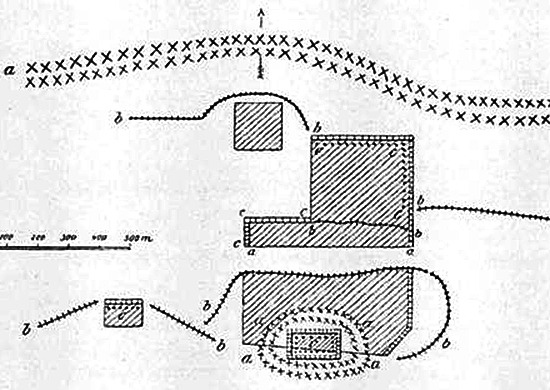
The appearance of machine guns and massive artillery fire in the Russian-Japanese war demanded an even more skillful adaptation of defensive structures to the terrain. The troops, located in separate fortifications and trenches, could now be comparatively easily hit by massive aimed fire. In order to disperse artillery fire, which influenced the positions occupied by the troops, in August 1904, Russian military engineers began to create a system of continuous trenches with communications lines. For example, in the Liaodong fortified area between the forts and redoubts inscribed in the terrain, the rifle trenches were built in the form of solid trenches.
The obsolete fortifications were replaced by defensive positions equipped with group rifle trenches, dugouts, wire barriers and stretching for many tens of kilometers.
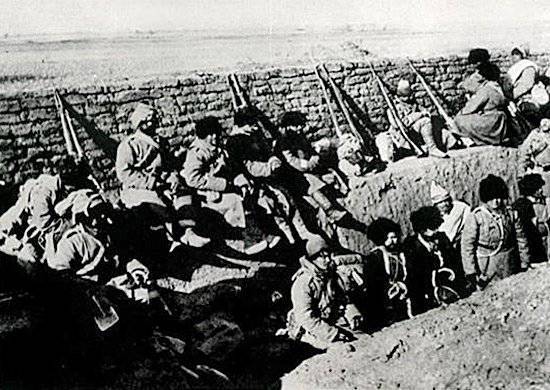
The units and units of the active army have turned their positions into a whole network of trenches. Often they were supplied with dugouts and reinforced obstacles. The trenches were perfectly applied to the terrain and camouflaged with the help of kaolin, grass, etc. The field war assumed the character of a serf, and the battles were reduced to a stubborn struggle for fortified positions. In the trenches occupied by Russian soldiers, latrines were constructed, and much attention was paid to their sanitary condition21.
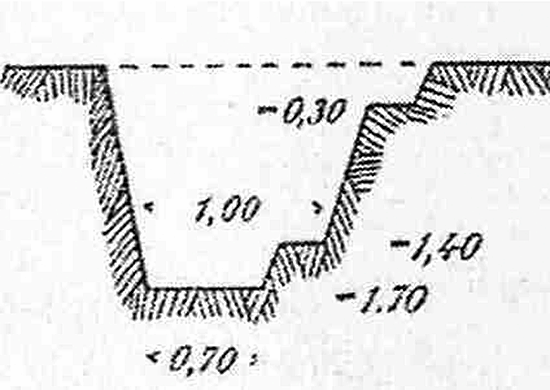
In the trenches of the army, dugouts of various forms were arranged. Sometimes whole companies were placed in them, loopholes arranged in them, made of sacks filled with earth or sand, were placed in them. For reserves, dressing points, warehouses of shells and cartridges, dugouts were arranged either under the rear slope or under the traverse arms. Message moves are sometimes completely covered with roofs.
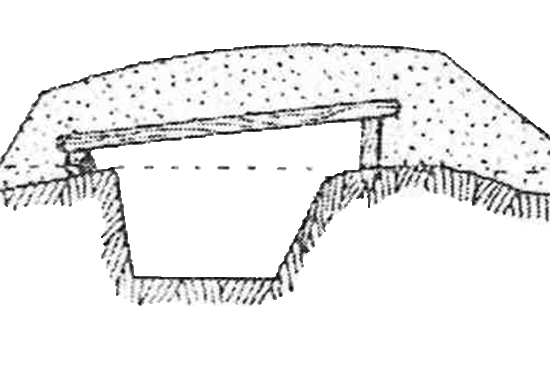
In the Russo-Japanese War for the first time in stories Wars was carried out engineering equipment rear defense lines to great depths. On defensive lines, such positions as Simuchenskaya, Khaychenskaya, Lyaolyanskaya, Mukdenskaya and Telinskaya, built in advance under the guidance of military engineer Major General K.I. Velichko contributed to improving the resistance of the troops and contributed to the fact that time was won to concentrate the troops in the most important theater points. After the so-called “Shahian seat” (on positions ahead of the Shah river), the Russian troops were forced to withdraw, using the defensive lines previously created in the rear (Mukdensky and Telinsky). Unable to hold out for a long time at the Mukden turn, the Russian troops retreated from it to Telinsky line, which was retained until the end of the war. The Russian army fought bravely. “Our soldier,” wrote a war veteran A.A. Neznamov, - did not deserve a reproach: he with inimitable energy endured all the hike in the over forty-degree heat, through impassable mud; he did not systematically fall asleep, for 10 – 12 days he did not come out of the fire and did not lose the ability to fight. ”22.
The interests of increasing the combat readiness of military units urgently required the availability of medical support. The infirmaries were supposed to be organized at infantry shelves - on 84 beds and on cavalry - on 24. The infirmaries were located in the barracks. In the wards, the internal space of at least 3 cube was relied on each patient. fathoms. The height of the chambers must be at least 12 feet. In the infirmary, a room was set up for receiving and examining patients (from 7 to 10 square. Sazh.), A pharmacy and a kitchen. In the workshop (3 square. Soot.) Kept uniforms of patients. A separate room was equipped for a bath with water-heating and laundry (16 square. Sazh.). A hut was built near the infirmary, in which the morgue and the room for the funeral service of dead soldiers were located (9 square. Sazh.). During 1904, the military department decided “soon to open 46 new hospitals on 9. beds in Khabarovsk - Nikolsk »23. Despite the fact that the loan was allocated on time, the construction of hospitals was delayed due to the lack of workers.
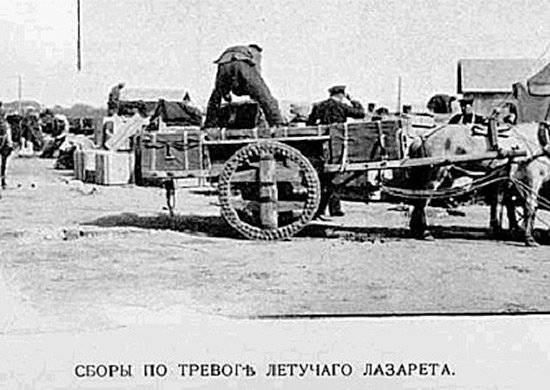
Soon, in the Russian army, utility rooms began to be adapted to accommodate hospitals. Thus, “the barge-hospital was consecrated for the evacuation of the wounded and sick in Khabarovsk and Blagoveshchensk with all the devices. The construction of the barrack at the expense of the Moscow nobility »24. From September 25 to 11 October only 1904 was evacuated from the field army to Mukden, and then further to the rear of the wounded and sick officers - 1026, soldiers and noncommissioned officers - 31 303. At the Mukden station, the wounded and sick were tied up “in the dressing tents, fed and given to tea at the Red Cross feeding center, and when sent on trains they were provided with warm blankets and bathrobes” 25.
In 1906, the return to the military districts of the former Manchurian armies took place, after the end of hostilities in the Far East. All units of the army returned to their military camps. In Manchuria, until the end of the occupation, one consolidated corps remained as part of the 4 East Siberian Rifle Division and 17 Infantry Division, 11 batteries and 3 Cossack regiments concentrated in the Harbin-Jilin-Kuanchendzy-Tsitsikar26 area. Temporarily the troops were located in the barracks, built for hospitals, and dugouts, built during the war. The walls of the barracks were double, plank, and the gap was filled with ash, asbestos, earth, etc. Heated barracks iron furnaces27. These premises did not correspond to the climatic conditions at all, the dugouts were cheeses and unsanitary and, for all that, there were not enough rooms.
Thus, during the Russo-Japanese War 1904 – 1905. certain work was carried out on the arrangement and deployment of personnel in formations and units in the theater of operations. The experience of the war confirmed that the engineering equipment of the terrain is not of secondary importance, not only on a tactical scale, but also on an operational-strategic scale. However, instead of a deep analysis of this experience, the command of the Russian army was condemned for the practice of early construction of rear defensive lines, and the initiator of the creation and the head of the construction of these lines Major General K.I. Velichko was called the “evil genius Kuropatkin” 28.
1. History of the Russian-Japanese War 1904 – 1905 - M., 1977. C. 22 – 47.
2. The overall report on the actions of the Military Ministry for 1902. General overview of the status and activities of all parts of the Military Ministry. Part of the General Staff. - SPb., 1904. C. 6.
3. Russian-Japanese War 1904 – 1905 Collection of documents. - M., 1941. C. 491.
4. Military news Harbin // Military life. 1905. 3 Jan
5. War Order No. 62 of 1890
6. A collection of systematic reports on the history of the Russo-Japanese War, made in the Vilna Military Assembly during the winter period. 1907 – 1908 Part II. - Vilna, 1908. C. 184.
7. Strokov A.A. History of military art. - M., 1967. C. 65.
8. Ryabinin A.A. In the war in 1904 – 1905. From the notes of the officer of the army. - Odessa, 1909. C. 55.
9. At war. Awards brave (article unsigned) // Bulletin of the Manchurian army. 1904. 16 June.
10. Telegrams of the Russian Telegraph Agency // Bulletin of the Manchurian army. 1904. 18 Oct
11. 20 th East Siberian Rifle Regiment in battles from September 28 to October 3 1904 (article without a signature) // Manchurian Army Bulletin. 1904. 1 Nov.
12. P. Efimov. From the Mukden events (from the diary of the officer of the 4 th Infantry Regiment) // Officer's life. 1909. No. 182 – 183. C. 1197.
13. During the Russo-Japanese War 1904 – 1905 The Japanese army used “shimoze” projectiles on a large scale for 75-mm field and mountain guns, in which a charge of approximately 0,8 kg of trinitrophenol was molten in a special way in the form of fine-grained mass.
14. Shrapnel is a type of artillery projectile designed to destroy enemy personnel.
15. Vyrzhikovsky V.S. Quartermaster issues // Bulletin of the Manchurian army. 1904. 15 Nov.
16. Gaoliang - food, fodder and ornamental culture in China, Korea and Japan.
17. A collection of systematic reports on the history of the Russo-Japanese War, made in the Vilna Military Assembly during the winter period. 1907 – 1908 Part II. - Vilna, 1908. C. 191.
18. Heating military tents and dugouts (article unsigned) // Bulletin of the Manchurian army. 1904. 27 Oct
19. Telegrams of the Russian Telegraph Agency // Bulletin of the Manchurian army. 1904. 11 Oct
20. Immunuel F. Instructions, learned from the experience of the Russian-Japanese war major of the German army. - SPb., 1909. C. 66 – 67.
21. Immunuel F. Instructions, learned from the experience of the Russian-Japanese war major of the German army. - SPb., 1909. C. 126.
22. Neznamov A.A. From the experience of the Russian-Japanese war. - SPb., 1906. C. 26.
23. Telegrams of the Russian Telegraph Agency // Bulletin of the Manchurian army. 1904. 18 Oct
24. Telegrams of the Russian Telegraph Agency // Bulletin of the Manchurian army. 1904. 28 May.
25. Order to the troops of the Manchurian Army No. 747 from 1904. // Telegrams of the Russian Telegraph Agency // Herald of the Manchurian Army. 1904. 1 Nov.
26. All-submitted report on the actions of the Military Ministry for 1906. General activity of all parts of the Military Ministry. Part of the General Staff. - SPb., 1908. C. 15.
27. Immunuel F. Instructions, learned from the experience of the Russian-Japanese war major of the German army. - SPb., 1909. C. 126.
28. Velichko K.I. Military engineering. Fortified positions and engineering preparation of their attack. - M., 1919. C. 26.
Information